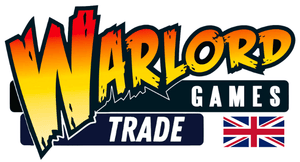Products
-
Pike & Shotte Epic Battles: Scots Covenanters BattaliaThe Covenanters were those in Scotland who had signed the National Covenant in 1638 which opposed King Charles I’s interference in religious matters when he attempted to impose changes on the Scottish Church. Although siding with Parliament in the Civil Wars, it was never...
-
Pike & Shotte Epic Battles: Scots Covenanters starter armyThe Covenanters were those in Scotland who had signed the National Covenant in 1638 which opposed King Charles I’s interference in religious matters. The Covenanters were well equipped and motivated, led by officers who had served in the Thirty Years War, and were an...
-
Pike & Shotte Infantry Regiment plastic boxed setThe 17th Century saw the assembling of large regular armies equipped and supplied by the state. Many units, though not all, were uniformly attired for the first time, and formed into companies and regiments then finally brigaded together into tercios or battalias. Formations on...
-
Prussian Landwehr regiment 1813-1815The Landwehr were militia formed from teenagers through to men in their forties. They were plucked from their fields, shops and offices and enrolled into the Prussian military machine to enlarge the forces that could finally depose Napoleon, the Tyrant of Europe. Prussia was...
-
Russian Line Infantry 1809-1814Despite, or quite possibly, because of, the harsh conditions they were brought up in, the Russian soldier was stubborn, resilient and unflinching. The Russian infantryman played decisive roles in each of the great battles against the French and their allies during the Napoleonic Wars....
-
SamuraiThe Samurai is an almost mythical warrior caste of Japanese history. Their most famous exploits occurred during the Sengoku period between 1467 and 1603. With the Emperor and the Shogun unable to control the many Daimyos, there was near constant fighting between the various...
-
Samurai Starter ArmyThe Samurai are the almost mythical warrior caste of Japanese history. Their most famous exploits occurred during the Sengoku period between 1467 and 1603. With the Emperor and the Shogun unable to control the many daimyos, there was near constant fighting between the various...
-
Saxon CeorlsArmies of the warring Anglo-Saxon kingdoms were a common sight on the British Isles from 5th to 11th Century. Ceorls (also spelt Churls) were free peasants who formed the basis of society in Anglo-Saxon England. Their free status was marked by their right to bear...
-
Saxon Starter ArmyLeading with a Saxon Warlord, defend your homes and land with this Saxon starter army! This complete starter set includes: 1 exclusive metal Saxon Warlord 4 metal Saxon Hearthguard 64 Saxon Ceorls 64 Saxon Thegns 4 waterslide decal sheets for shields Models supplied unassembled...
-
Saxon ThegnsThegns, the wealthy noblemen of Anglo-Saxon kingdoms, served as retainers for their lords, fulfilling their obligation of military service. Well-trained and equipped, thegns served as infantrymen, clad in chain mail armour and iron helmets shields. Led to battle under dragon banners, they provided Saxon...
-
Skeleton WarriorsSkeleton troopers can be insubstantial spectral creatures if we wish our forces to represent the spirits or essences of long-dead warriors rather than their material remnants. Skeleton warriors can be armed with swords or spears, others wield bows or crossbows, or ride skeletal steeds...
-
Soviet Peoples Militia squad‘Popular regimentation’ or the ‘people’s militia’ (Narodnoe Opolcheniye or Opolchenie) is a Russian tradition dating back to the 16th century and a powerful part of the national heritage. In times of emergency, a militia was selected from volunteers to serve alongside the regular army...
-
Spartan Starter armyThis box set contains: 160 Plastic Spartan hoplites 8 Metal Greek slingers Metal Spartan command 4 Spartan shield decal sheets and plastic bases The Spartan command would typically be the finest group of warriors amongst the troop, they'd have the duty to empower their...
-
Spartans: Spartans plastic boxed setThe Spartans are possibly the most famous fighting men in history, and rightly so! Spartan Hoplites were respected and feared throughout Greece, and it was long thought that no land power could stand against them. Lacedaemon, with Sparta as its capital, stood firm against...
-
SPQR: Caesar's Legions - HeroesA wealth of legendary leaders are available to lead your legionaries in SPQR campaigns. Julius Caesar's eventual victory in the Gallic Wars would give him the powerbase to eventually reform the republic into an Empire. Pompey achieved many victories including against the slave revolt...
-
SPQR: Caesar's Legions - Legionaries with gladius & slingThe mainstay of Roman military; Roman Legionaries were well armed and exceptionally trained soldiers. They were given great incentive to enter and remain in military service with promises of wealth and lands. The legionaries trained as a unit, able to form shield walls and...
-
SPQR: Caesar's Legions - Legionaries with pilumThe mainstay of Roman military; Roman Legionaries were well armed and exceptionally trained soldiers. They were given great incentive to enter and remain in military service with promises of wealth and lands. The legionaries trained as a unit, able to form shield walls and...
-
SPQR: Caesar's Legions - Scorpion teamThe scorpion war machine was light enough to be transported by even a small warband, yet lacked no punch. Its bolts could pierce the thickest armour or cause considerable disruption to an enemy formation. Contains: 1 resin scorpion and 2 crew figures Scorpio Team...
-
SPQR: Dacia & Sarmatia - Dacian FalxmenThe Roman legions soon came to respect the warriors of Dacia. Far from being simple barbarians, they were brave and carried a large curved sword, the falx, that easily slipped past the shields of the legionaries. Roman casualties quickly mounted when facing Dacians, and...
-
SPQR: Dacia & Sarmatia - Dacian Tribesmen With JavelinsDacian tribesmen were poorer or less skilful than the falxmen and nobles, but provided support that was more than adequate in the form of javelins, sling stones and arrows. In sufficient numbers, they were capable of facing even veteran soldiers and many a legionary...









































